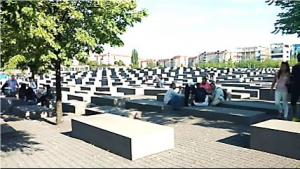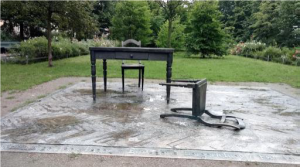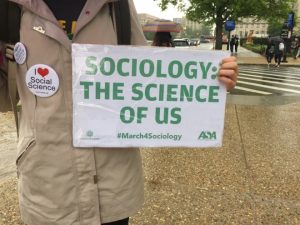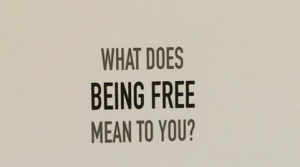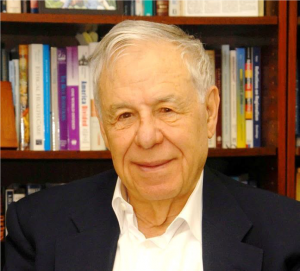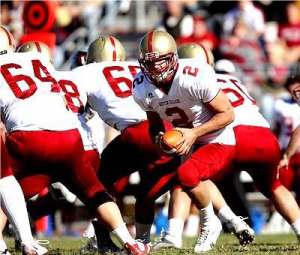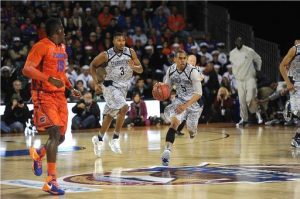By Eduardo Bonilla-Silva
109th President of the American Sociological Association
This is an abridged version of a presidential talk to the District of Columbia Sociological Society, January 27, 2017.
This article is about race in TrumpAmerica and is oriented around two pressing questions: (1) is Trump’s victory evidence of an increase in “racism” in the nation? and (2) is the problem of racism concentrated among poor, uneducated, working class white folks? To answer these questions, I will do four things. First, emphasize the need for theoretical clarity on what racism is all about and give you a taste of what I will articulate in my ASA speech in 2018. Second, argue that systemic racism did not die in the late 1960s with the collapse of Jim Crow, but was replaced by a more formidable regime—the “new racism.” Third, contend that although there are several racial ideologies at play, “color-blind racism” rules the ideological landscape of the nation. I will argue that this ideology is the connecting racial tissue of how most whites think, talk, frame, and even feel about race matters. Lastly, conclude by addressing what needs to be done to advance the cause of racial justice in America.
What is Race? What is Racism?
Following the advice of the King in Alice in Wonderland, I “begin at the beginning” by addressing some racial theory. We cannot continue discussing race matters by accepting the premise that race is the fulcrum of things, a premise that reifies the existence of the category. Race is absolutely nothing without racism. Racism is the engine that creates the conditions for races to exist through racialization (Omi and Winant 1986). Race then is “socially constructed,” but as is the case with all social categories, it is a never-finished product—it must always be recreated through practices in the everyday. This implies that “race” has fractures, imperfections, and ambiguities which allow us to do political work to change things. If race was a finished thing, there would be no point in doing politics in the race arena as actors’ views, postures, and likely actions would be preordained.
But beginning our conversations on racism rather than on race is not enough. We must still do something harder: challenge the dominant narrative regarding what racism is all about, the racism-is-prejudice perspective which focuses attention on the individual-level analysis of people’s attitudes, motivations, and behaviors. This perspective, so evident in the last election cycle, does not allow us to justify the agenda and politics the moment requires. The more we focus on individual prejudice, the more we will continue advocating for education, diversity training, and racial dialogues or “beer summits” as the solutions to racism. We must find ways of advancing a structural interpretation of racism. We must explain that racism is about racial domination or racial rule. And because racism is anchored on systemic advantages for whites, whites are vested in maintaining the (racial) world as it is (Bonilla-Silva 1997).
A Taste of Feeling Race
Although I believe it is crucial that we anchor our analysis of race matters in a structural-materialist theory, we must expand our notion of the “material.” Why? Because humans do not survive on bread alone! Once any social category is created, it is also charged emotionally. Simply put: one cannot create social divisions without imbuing and bonding the actors emotionally.
Hence, racialized actors pursue not just “objective” race-based interests, but also subjective or emotional ones. (On this, please see the book by Paula Ionide, The Emotional Politics of Racism.)
I have labeled the Post-Civil Rights racial regime as the “new racism” and argued that its dominant practices, unlike those typical of the Jim Crow period, tend to be subtle, institutional, and seemingly non-racial (Bonilla-Silva 2001). For example, whereas school or residential segregation were maintained in the past through direct exclusionary strategies, today they are reproduced in a seemingly “non-racial” fashion. Neighborhood segregation, for instance, is accomplished through steering by realtors, white property owners relying on white networks to get renters or buyers or using clever strategies to exclude minority clients, and redlining by banks.
In White Supremacy and Racism in the Post-Civil Rights Era (2001), I added an important detail to my original argument—the idea that although some of the practices may not be covert and subtle, they are so by virtue of being invisible to the white population. For example, Post-Civil Rights’ racial control practices (police brutality, racial profiling, and community surveillance) although not “overwhelmingly covert” are part of the “new racism” because (1) they are perpetrated by state officers (actors regarded as objective and legitimate by whites), (2) the agencies in charge (police departments and criminal justice system) are deemed racially neutral, (3) whites perceive crime as black/brown, hence, whatever happens to “them,” it is okay, and (4) the incidents that happen (e.g., Rodney King, A. Diallo, Trayvon, etc.) and garner public attention are treated as “isolated cases.”
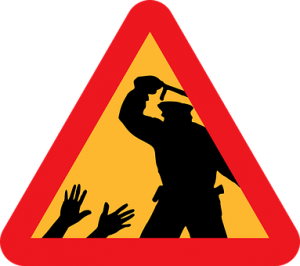
Source: pixabay.com
Cell phones and social media have made these incidents more visible, but nonetheless, this violence is regarded by most whites as legitimate and non-racist. Perhaps since the murder of Trayvon Martin, we have focused intensely on one aspect of the “new racism” control tactics: police brutality. This is expected as social mobilization always follows incidents that galvanize people’s attention and we have had plenty of opportunities. Watching the news gives the impression that we are indeed in what Michelle Alexander (2010) labels in her book as the “New Jim Crow,” but I want to suggest that this interpretation limits our ability to understand what is going on, and of what we should do.
First, although we think police brutality and shootings of black folks are on the rise, cause-of-death data from the Centers for Disease Control and Prevention (CDC) reveal that between 1968 and 2011, blacks were, on average, 4.2 times more likely to be killed by cops than whites, so police brutality is not a new concern (CDC 2012). Police brutality and shootings have been a consistent fact of life for people of color in America. Second, the vilification of black and brown folks by regular white folks, which allows them to be okay with the violence inflicted upon us by the police, began way back but intensified in the 1960s. This vilification has crystallized in a controlling image that Kathryn Russell-Brown labels as the “criminalblackman” (1998) as well as what historian Heather Ann Thompson calls the “criminalization of urban space” (Thompson 2010). Both images have facilitated measures, laws, and policing tactics that have produced our mass incarceration system.
Thus, Donald Trump’s claim to bring back “law and order” and his endorsement of tactics such as “stop and frisk” are not new developments. Finally, and this is key, the bulk of racial practices and behaviors that keep folks of color in “their (new but still subordinated) place,” are of the new racism or hegemonic variety. Although our focus on violence is understandable, we need to be analytical and political about how racial inequality is reproduced in this period. We are not in a New Jim Crow Era as racial domination in schools, jobs, stores, or in the streets is mostly, albeit certainly not exclusively, accomplished through “now you see it, now you don’t” tactics.
When folk of color are asked “May I help you?” at Nordstrom, or told by a teacher that they may be good in physical education, or declined for a job or denied admission to college based on exams that do not predict much, or charged more for a loan independent of their financial profile, or steered into a different neighborhood by a smiling realtor, or told that their accomplishments on the job are due to affirmative action, we must understand that all of these things are examples of the “new racism.” Although it may not seem politically sexy to organize against these slippery things, they are the core practices that maintain the racial monster we face these days.
Contemporary Racial Ideological Field
In my book, Racism Without Racists (2010), I argue that a new racial ideology dominates the landscape: color-blind racism. However, no ideology, racial or otherwise, rules any polity at any point in time a hundred percent. This means that although color-blind racism is hegemonic, there are still strong pockets of old-fashioned, Jim Crow-type prejudice out there.
How many whites still hold old-fashioned racist beliefs? It is hard to tell with precision, but I guesstimate, based on survey results and recent political outcomes, that about between eight to ten percent of whites do not sing the color-blind song. This does not mean that 8-10 percent of whites belong to the Klu Klux Klan or are “fascist”—a term used very lightly in this last election cycle.
But it means that a non-trivial number of whites still hold outmoded racial views, so we must pay attention to this segment of the white community. “Deplorables,” as Hillary Clinton referred to them during the campaign, exist, but they are not fifty percent of the white population. Not all whites spewing the old-fashioned racial poison do so in the same way as whites did in yesteryears! Variations in tone and articulations with elements of color-blindness abound.
For instance, although Donald Trump made many racially crude remarks throughout the campaign and had a record of racial discrimination in housing1 and in dealings with black employees,2 and has allegedly odious racist personal views (Johnston 2016), he insisted in the campaign that he was “the least racist person you’d ever met,” that he loved Mexicans and that Mexicans loved him back—which he demonstrated by eating a taco salad during “Cinco de Mayo,” and by insisting that, “I love the Muslims. I think they’re great people.” More significantly, his racialized articulation was coded by the media and by most journalists as not “really racist,” which contrast with how they dealt with characters such as Donald Sterling (Clippers), the Nevada rancher Clyven Bundy, David Duke, or Richard Spencer (Alt-Right leader).
The White Color of Color-Blind Racism
My main claim in Racism Without Racists is that the nasty racial discourse of the past has been, for the most part, replaced by a more “civilized racism” that I label “color-blind racism.” By this I mean the new dominant racial ideology anchored in the abstract extension of the principles of liberalism to racial matters.
This ideology is comprised of frames, style, and racial stories (for definitions, see chapters 3, 4, and 5 in the book). The central frames of this ideology are “minimization of racism,” “cultural racism,” “naturalization,” and “abstract liberalism.” Combined, these frames amount to this: whites believe that racism is gone, that people of color do not do well because of cultural deficiencies, and that programs assisting people of color represent reverse racism. In this section I will focus on the minimization of racism frame.
Whites do not believe that discrimination is why nonwhites fare worse than whites in America. Instead, they believe that “it’s because of their culture,” “class,” “legacies from slavery,” “Mexican/Puerto Rican backward culture,” “culture of segregation,” “lack of social capital,” welfare dependency, or plain laziness. For whites, the plight of people of color is due to “Anything but racism!” An example of this is Sandra, a retail salesperson in her early forties, who explained her view on discrimination as follows:
I think if you are looking for discrimination, I think it’s there to be found. But if you make the best of any situation, and if you don’t use it as an excuse… I think sometimes it’s an excuse because people felt they deserved a job, whatever! I think if things didn’t go their way I know a lot of people have a tendency to use prejudice or racism or whatever as an excuse. I think in some ways, yes there is (sic) people who are prejudiced. It’s not only blacks, it’s about Spanish, or women. In a lot of ways there [is] a lot of reverse discrimination. It’s just what you wanna make of it (Bonilla-Silva 2010: 46).
This needs very little comment. Since most whites, like Sandra, believe discrimination has all but disappeared, they regard minorities’ claims of discrimination as excuses or as minorities playing the infamous “race card.”
I could say more about the style, particularly semantic moves such as “I am not a racist, but…” or “Some of my best friends are black…” and racial stories of color-blind racism such as “I didn’t own any slave” and “The past is the past,” but I must move on and address the race/class question. Despite the hoopla in the media and by sociologically-inclined pundits, the core racial views of poor, working, and middle class whites are actually quite similar. This in part explains why most whites voted for Trump, including the millennials. (As an aside, I must point out that analytically, voting for Hilary or for Obama, cannot be read, as so many have done, as evidence of people not subscribing to a particular racial ideology. All Americans are racialized subjects, hence, have racial viewpoints. It is my belief that the majority of whites, whether Democrat or Republican, subscribe to color-blind racism, although most likely, Republicans do so with more intensity and nastiness.)
The following examples illustrate the similarities in the racial views of working and middle-class whites. First is Bob Hardey, Mayor of the City of Westlake in Louisiana, in Arlie Hochschild’s book Strangers in their Own Land:
I have had enough of poor me. I don’t like the government paying unwed mothers to have a lot of kids, and I don’t go for affirmative action. I met this one black guy who complained he couldn’t get a job. Come to find out he’d been to private school. I went to public school like everyone else I know. No one should be getting a job to fill some mandated racial quota or getting state money not to work (Hochschild 2016: 92).
How different is the Mayor’s view from that of John Avery, a worker in Youngstown, OH, interviewed in Joel Gest’s book, The New Minority?
There are a lot of people who abuse [welfare]. I am running around busting my hump, while another guy sits on his porch. That’s not right. I get food assistance and medical from the government because of my daughter. But I go to work every day, even after I broke my leg. You have to earn it [People on welfare] are driving around in new cars and I can’t even afford a vehicle. The government pays their rent and utilities, and so they spend the cash on gold chains and a Cadillac, when I can barely afford my Cavalier…People will take advantage of things any way they can (Gest 2016: 95).

Source: pixabay.com
And these views are not new as we have had the data on the racial views of white workers and middle-class folks for years. For instance, Al Ricardi, a taxi driver quoted in Lillian Rubin’s Families on the Fault Line (1994), stated:
Those people, they are hollering all the time about discrimination. Maybe once a long time ago that was true, but not now. The problem is that a lot of those people are lazy. Theirs is plenty of opportunities, but you’ve got to be willing to work hard.
When pressed to define who “those people” are, he said:
Aw, c’mon, you know who I am talking about. It’s mostly the black people, but the Spanish ones, too.
My point on the similarities in the racial views of poor and middle-class whites is not new. Barbara Ehrenreich said the same thing in her 1990 book, Fear of Falling: The Inner Life of the Middle Class: “On most of the key “backlash” issues, as defined by the media, it was hard to distinguish the blue-collar people singled out by the news magazines from the rest of the Middle Americans” (104). She cites a Massachusetts Institute of Technology Professor in a story, based on a poll commissioned by Newsweek, as saying that successful blacks were “almost all light-colored” and an investment advisor who defined “law and order” for the pollsters as, “Get the niggers. Nothing else” (105). In my own data, gathered in the late 1990s, John II, a retired architect, said about reparations that,
Not a nickel, not a nickel. I think that’s ridiculous. I think that is a great way to get the black vote. But I think that’s a ridiculous assumption because those that say we should pay them because they were slaves back in the past and yet, how often do you hear about the people who were white that were slaves, say, Boy we should get reparations, the Irish should get reparations from the English (Bonilla-Silva 2010: 79).
Conclusion
I return to the questions I posed at the outset and discuss what is to be done. First, is Trump’s victory evidence of an increase in “racism”? The right question is not if we have more or less “racism” today, but whether systemic racism is still in place. My answer to this more theoretically clear question is that we have had a new racial regime in town for a while: the new racism. Trump’s victory denotes the ebb and flow of the race-class question under the new racism regime. Our present situation, in fact, is remarkably similar (including the reaction of the liberal-progressive community) to Regan’s victory in 1980 and, to a lesser extent, to Bush’s victory in 2000.
Second, are poor whites the reason for why we have racism in the nation and for Trump’s victory? As I argued, we should not vilify poor and working whites for Trump’s victory or for racism in the nation (racism is society-wide), but I am not suggesting a return to the “workers of the world” approach to politics (class over race) or the empathy-without politics route advocated by Hochschild either. What the moment requires is a more nuanced understanding of the race/class nexus in contemporary America. What we desperately need is an analysis to help us to forge the politics necessary to work with the “white masses.”
Now a few words on what is to be done to address the seemingly beyond race and racism (as practices and as ideology) we face today as well as the harsher, more direct version practiced by poor whites and white workers. First, we must preach that racism is not about good and bad people, but about an institutional racial order that benefits some at the detriment of others. Second, if racism is structural, we must fight the nonsense that tolerance, teaching folks to be good people, or organizing “beer summits” are the tools to fight racism. To be clear, being nice and tolerant is good, but none of these things alone will change the basics of our racial order.
For that to happen we need a serious social transformation. Third, since 1980, we all but abandoned the white working class. We viewed them as Archie Bunkers and stopped doing what radical and ethical people should always do: work with as many people as one can in the effort to build the “new society.” The white working class, as much as the white middle class, is deeply racialized, so I am not saying the work will be easy. However, they have fractures and ambivalences that can be exploited.
Gest, for instance, suggests that in areas where black and white workers live together and interact meaningfully, class tends to become a more salient identity.
Others, such as David Roediger (2007) and Joel Olson (2004), advocate for an abolitionist-democratic movement from below—a politics committed to expanding freedom through the dissolution of whiteness. But whatever we do, we cannot abandon forty to fifty percent of the people as that leaves the door wide open for Trump-like politicos to play the white ethno-nationalist card.
I end by outlining a specific plan of action for us, sociologists committed to creating a racially just society. First, we must appreciate the centrality of social movements in fighting racism. Given that racism is structural, the bulk of our efforts should be dedicated toward organizing people for social change. (I know we want to do “more research” but research has not freed anyone in history!) Second, although we must do social justice work where we work and live, it is also time to get out of our comfort zone. The struggle for racial justice requires that we do socio-political work in Youngstown, Ohio; Warren, Michigan; Erie County, Pennsylvania; Gary, Indiana; the “rural” counties of Wisconsin; and in the South. Lastly, although we must work on raising the consciousness of the people, we must also educate ourselves. This means moving beyond liberalism and becoming anti-racists, and anti-racism begins by retooling ourselves—recreating how we live our life, with whom we associate, and what we do about systemic, cultural, and personal racism. The time for theoretical progressiveness is over! It is time for all of us to recommit to the struggle; it is time, once again, for action. In the words of black abolitionist Frederick Douglas, “Power concedes nothing without a demand. It never did and it never will.”
Notes
- He was sued twice by the Department of Justice in the 1970s (Kranish and O’Harrow Jr. 2016).
- He was fined in the 1990s by the New Jersey Casino Control Commission for forcing black dealers out when high rollers were around (White 2016).
References
Alexander, Michelle. 2010. The New Jim Crow: Mass Incarceration in the Age of Colorblindness. New York: The New Press.
Bonilla-Silva, Eduardo. 1997. “Rethinking racism: toward a structural interpretation” American Sociological Review 62:465-80.
____. 2001. White Supremacy and Racism in the Post-Civil Rights Era. Boulder, CO: Lynne Rienner.
____. 2010. Racism Without Racist. Lanham, MD: Rowman and Littlefield.
Centers for Disease Control and Prevention. 2012. Multiple Cause of Death Data. Atlanta: United States Department of Health and Human Services.
Ehrenreich, Barbara. 1990. Fear of Falling: The Inner Life of the Middle Class. New York: HarperCollins.
Gest, Justin. 2016. The New Minority: White Working Class Politics in an Age of Immigration and Inequality. New York: Oxford University Press.
Hochschild, Arlie Russell. 2016. Strangers in their Own Land. New York: The New Press.
Ionide, Paula. 2015. The Emotional Politics of Racism: How Feelings Trump Facts in an Era of Colorblindness. Stanford: Stanford University Press.
Johnston, David Cay. 2016. The Making of Donald Trump. New York: Melville House.
Kranish, Michael and Robert O’Harrow Jr. 2016. “Inside the Government’s Racial Bias Case Against Donald Trump’s Company, and How He Fought It,” The Washington Post, January 23.
Olson, Joel. 2004. Abolition of White Democracy. Minneapolis: University of Minnesota Press.
Omi, Michael and Howard Winant 1986. Racial Formation in the United States: from the 1960s to the 1990s. New York: Routledge.
Roediger, David. 2007. The Wages of Whiteness: Race and the Making of the American Working Class. New York: Verso.
Russell-Brown, Katheryn. 1998. The Color of Crime: Racial Hoaxes, White Fear, Black Protectionism, Police Harassment and Other Macroaggressions. New York: New York University Press.
Thompson, Heather Ann. 2010. “Why Mass Incarceration Matters: Rethinking Crisis, decline, and Transformation in Postwar American History” The Journal of American History 703-734.
White, Abbey. 2016. “A Trump-Owned Casino Was Fined For Agreeing to Keep Black Employees Away from a Racist High Roller,” Paste, March 10.
Return to May 2017 Issue
